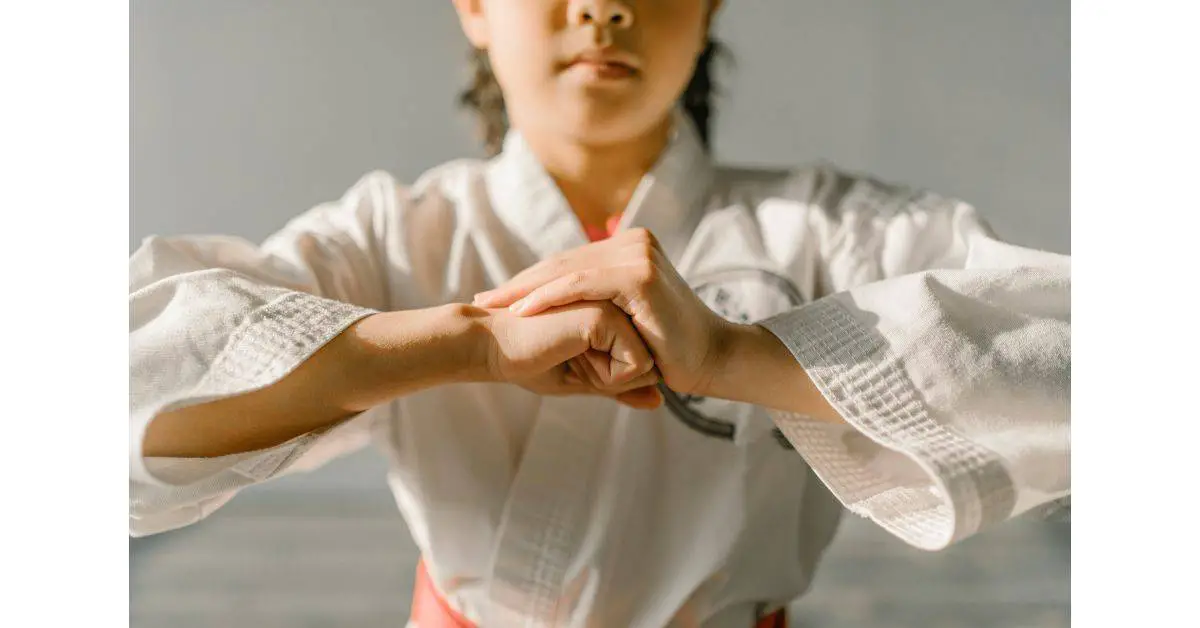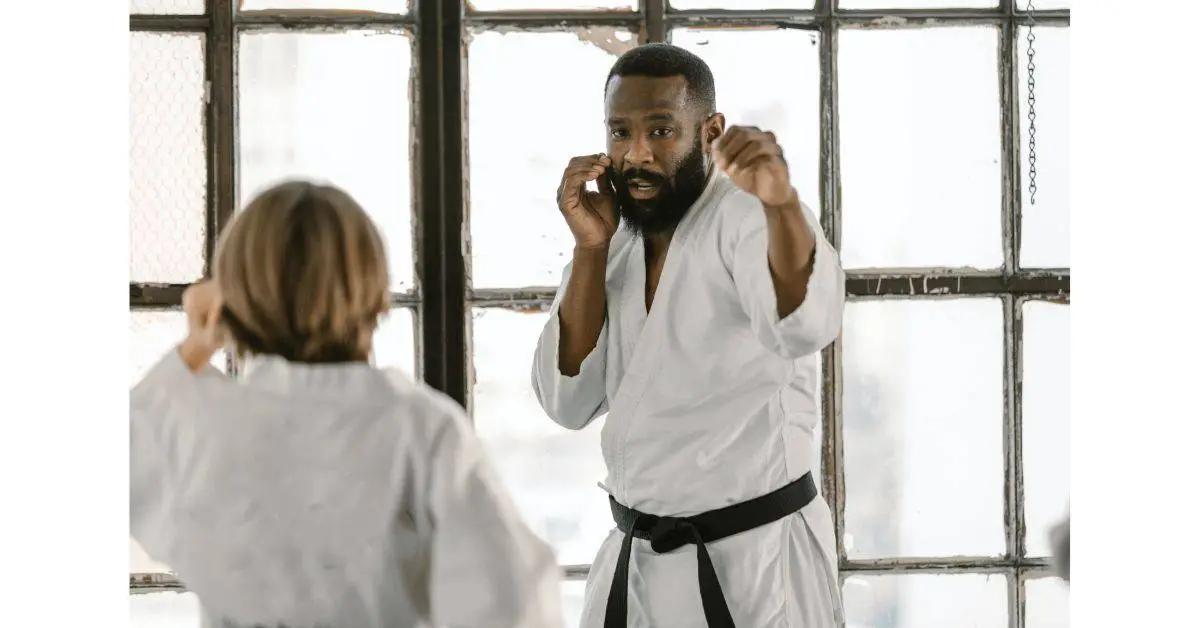Karate is a weaponless martial art and, just like any other art, it requires extensive mastery of technique. Training is paramount in Karate for the student to learn the style and technique of unarmed combat. So what does Karate training involve?
Karate training has two key components: karate techniques and exercises. Karate training exercises include strength training, body conditioning, flexibility, and balance exercises. The main karate techniques consist of striking art and open-hand techniques. This involves punches, blocks, kicks, and stances.
With the help of technology, people are opting to learn martial arts in the comfort of their homes. It is possible; however, the effectiveness of this venture is low. Students with a passion for karate should go to dojos and train with the help of experts.
For instance, in Kumite, the student is expected to engage in sparring with a partner, which is impossible in self-taught karate, as we shall see in this article.
Four Exercises Karate Training Includes
In martial arts, effortless victory is attained when a student is physically fit, to allow their body to perform the techniques they have learned effectively. Physical fitness is essential to becoming a skilled karateka.
The four main exercises that karate includes are strength-training exercises, body conditioning exercises, body balance exercises, and flexibility exercises. Students who enhance their physical fitness can perform karate katas effectively and outlast opponents in sparring sessions.

Strength training exercises
These exercises are designed to build the lower body, upper body, and core strength. They boost kicking power, punching power, and grappling techniques. Some of these exercises include core, biceps, leg, triceps, and upper body exercises.
Body Balance exercises
Martial arts students require balance training to gain stability, and increase punching and kicking power. Some balance training exercises include air kicks and agility drills. Balance training on the sand, balance pods, and wobble boards.
Body Conditioning exercises
Conditioning training is necessary for martial arts to build general body tolerance and stamina. Conditioning exercises include Hojo Undo.
Flexibility training exercises
Flexibility is important in martial arts to enable students to perform advanced martial art kicks and strike high targets. These exercises include dynamic stretches and static stretches.

Four Training Techniques Karate Teaches
Kihon refers to the fundamentals of karate that form the basis of each style. Kihon involves a group of karatekas training altogether in a sequence of techniques.
The four main Kihon include; Punches (Tsuki), kicks (Geri), Blocks (Uke), and stances (Tachikata). To excel in karate, one needs to grasp these techniques. Even the most basic karate moves require discipline, focus, and recurrent practice.
Punches (Tsuki)
Unlike other martial arts with close-handed techniques, karate includes punches and open-handed strikes. Hand techniques found in karate training include:
- Front lunge punch (Oi Zuki) – Oi zuki is performed in a front posture, throwing the punch with the punching leg.
- Uraken (Back fist) – Uraken is executed by folding the elbow to one’s chest and then folding it back on the adversary.
- Reverse punch (Gyaku Zuki) – This involves punching and kicking on opposite sides. While the guiding leg is on the right and the hand that punches is on the left.
- Straight punch (choku zuki) – This is a straight blow from the initial stance.
- Palm strike – This is a blow executed from the palm and can cause extensive damage if aimed at the face area.
- Hook punch (Kagi Tsuki) – This occurs when the karateka throws a direct punch and then turns it into a hook.
Kicks (Geri)
Karate techniques mainly focus on hand strikes, but kicks are still essential and more robust. The following are leg strikes taught in karate training:
- Sidekick (Yoko- Geri) – Delivering a sidekick linearly with the knee up high.
- Front kick (Mae- Geri) – This is executed with the back or front leg in a combat stance.
- Roundhouse kick (Mawashi- Geri) – This is a speedy kick that gets its thrust from the hip.
- Front leg sweep – This is executed by gliding one leg across the rival’s feet, kicking him off-balance.
Blocks (Uke)
Blocks are executed with open hands and closed fists to shield the legs and arms. These are the main blocking techniques practiced in karate.
- Inside block – this block is executed when the student’s innermost forearm encounters the opponent’s forearm to divert the attacks away from the head.
- Outward block – This block reduces the thrust from roundhouse kicks and hinders reverse punches by positioning one’s closed fist at a distance from one’s face.
- Upper block – These are high blocks executed with one’s closed fist aimed away from one’s face to block hammer punches and ax kicks.
- Lower block – These are lower blocks performed with your closed fist, siding your body to block strikes aimed at the mid-body.
Stances (Tachikata)
This posture helps you maintain balance while attacking. Stances build the framework of an attack. The basic stances in karate training are:
- Horse riding stance (Kiba dachi)– This stance is accomplished by having your arms wide apart, parallel to each other, with an aligned back and knees facing inward.
- Front stance (Zenkutsu dachi) – The front stance is achieved by the front leg being aligned while the rear foot is straight at 90 degrees and the back leg is slightly bent at 45 degrees.
- Musubi Dachi – Every lesson begins with this stance where the legs are in a v- shape position when bowing.
- Natural stance (Hachiji Dachi)– This is done after the Musubi Dachi where the student stands with both feet facing forward, with the arms in the anterior and tending to the body.
What Does Karate Training Involve?
A student can learn karate for various reasons such as art (budo), combat sport, and self-defense. Current Japanese style training draws attention to psychological factors integrated into proper attitude (Kokoro) such as dauntlessness, persistence, and virtue.
Mastery of martial arts begins with the fundamentals. Karate training is divided into three basics: Kata (forms), Kihon (basics), and Kumite (sparring)
1. Kihon
These are the building blocks of progressive sequences of karate, known as the katas. The kihon is organized into a structure the student can easily learn. As the student advances in rank, the kihon becomes more intricate and challenging to understand. Kihon may include pre-planned drills in pairs or smaller groups.
2. Kata (forms)
These are defensive and offensive motions formed in a sequence built on idealized combat operations. A student will attain a rank only when they show proficiency in the execution of the specific kata for that level. Different training schools have varying examining methods, but the Japanese rank terminology is widely used.
3. Kumite (sparring)
Kumite involves two students administering the correct sparring techniques and containing their movements. The three types of Kumite are:
- Ippon Kumite- Involves basic prearranged techniques, focusing on movements and proper range from the rival.
- Basic Kumite- This consists of three to five-step sparring, with recurrent strikes and blocks in a pre-planned technique.
- Jiyu Kumite- These are full-on sessions where the students are at liberty to apply any techniques. However, the students must administer robust strikes that halt before they join with their targets, for purposes of control. For this reason, advanced students perform this.
Final Words
Karate training is key in the journey to becoming a master of the art. Karate techniques and exercises are effective in karate proficiency.
Whether you are taking karate as a sport or as a self-defense tool, karate training is preeminent, so find a dojo near you and commence learning as soon as you can!
If you enjoyed reading this article, I encourage you to read another article of mine on Karate’s belt order. If you want to train in it, I highly recommend reading it.

